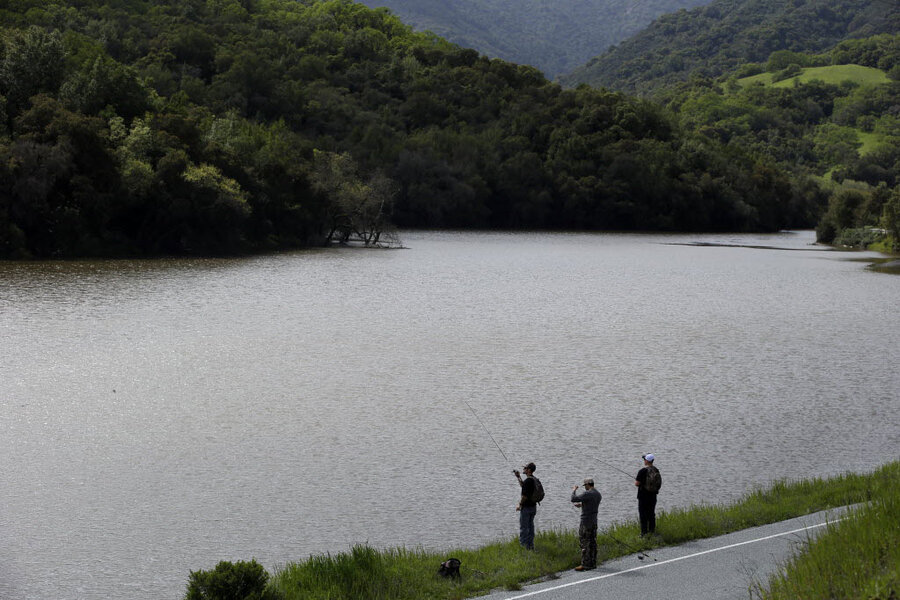Relief at last? 'Miracle' rains start to fill major California reservoirs
Loading...
Days of relentless rain storms in California over the weekend are being hailed a “miracle” for replenishing reservoirs and snowpack in a state that has been parched for four years.
Knocked down trees, flooding, power outages, and landslides barely dampened the excitement over the influx of water that has restored California’s largest reservoirs and set it on the road to recovery from drought. The largest reservoirs, Lake Shasta and Lake Oroville in Northern California, haven’t been as full since 2013.
The wet start to March has buoyed hopes that El Niño could help lift the state out of historic drought.
“We had a great wet January, a very dry and mild February and now here we go into March and we are crossing our fingers that is it going to be a miracle March,” meteorologist Roberta Gonzales told CBS San Francisco. “Right now it looks like it is going to be.”
Heavy snowfall in the Sierra Nevada mountains has restored snowpack there to 92 percent of average for the state, as the Sacramento Bee reports.
“It’s kind of nice to see that Mother Nature is trying to get back to an expected pattern,” Mike Anderson, the state’s top climatologist, told The San Francisco Chronicle.
“The recent storms have really helped,” he said.
The entire state depends on full reservoirs and healthy snowpack in Northern California, as the water from there eventually flows to the farms of the Central Valley and to the populated Southern California, parts of the state that have had little rain this winter.
San Francisco, on the other hand, has seen 21 inches of rain since July 1, more than it has had in any one year since 2011.
The wet conditions are causing widespread excitement and hope that the state will begin to ease water conservation laws that have forced shorter showers and dried up lawns. State and federal officials say this is possible if the wet conditions continue, but warn that California is not out of the red yet.
"It's definitely a step in the right direction, but it's not a panacea. We're not saved," Shane Hunt, a spokesman with the federal Bureau of Reclamation, which oversees Lake Shasta, the state's largest reservoir, told The Los Angeles Times. "We dug a pretty big hole in a lot of spots," he said.
Despite the progress in Northern California, statewide the water levels are not yet back to normal, he points out.
“We still don't have water in all the right places to meet demand going into peak season," said Mr. Hunt.
Water conservation laws will stay in effect at least through April, say state officials, and after that will be reconsidered based on updated water levels.
“I’m happy that it’s been raining,” Felicia Marcus, chair of the State Water Resources Control Board, told the Chronicle. “But every time the skies open up doesn’t mean the drought is over,” she warned.
Gov. Jerry Brown ordered the state’s first-ever mandatory water cutbacks last spring, after several years of historic drought. They required cities and towns to cut water use by a combined 25 percent, with the sharpest reductions required among the biggest water consumers.








